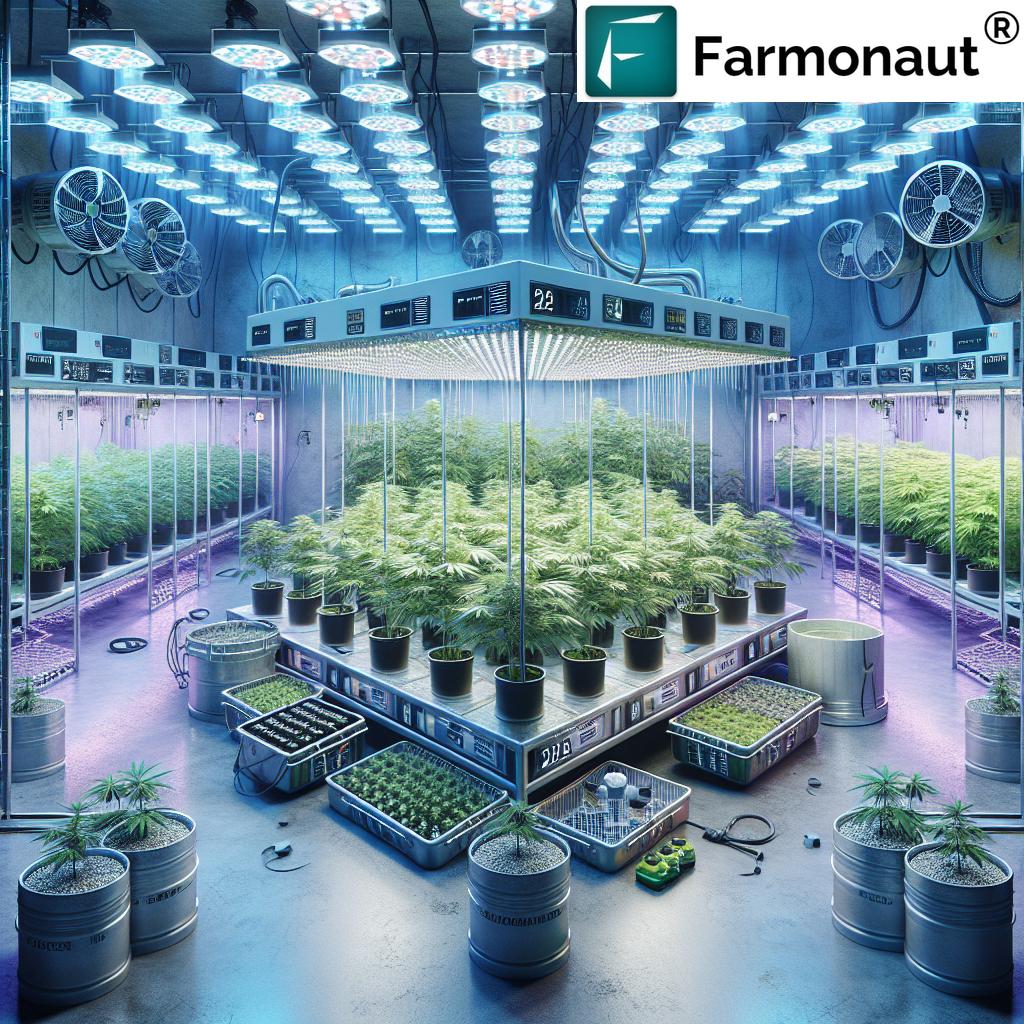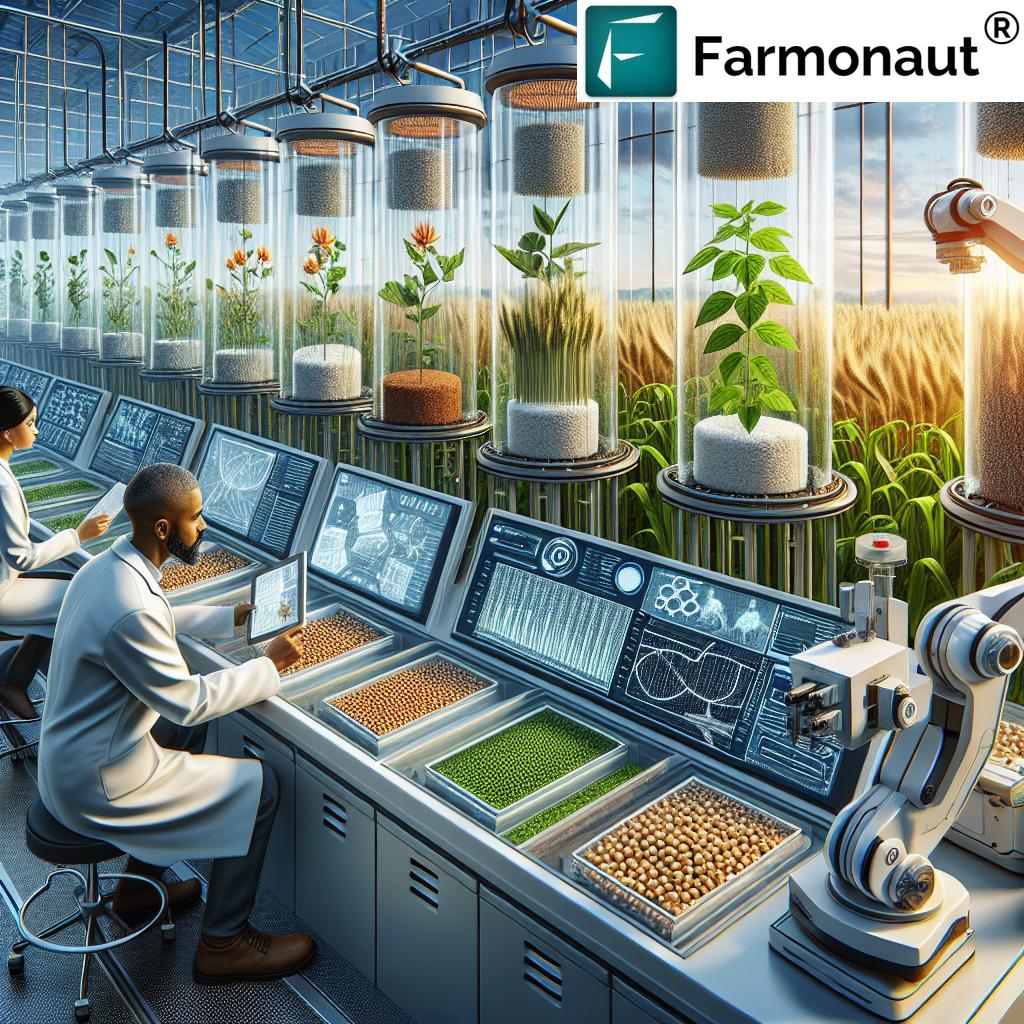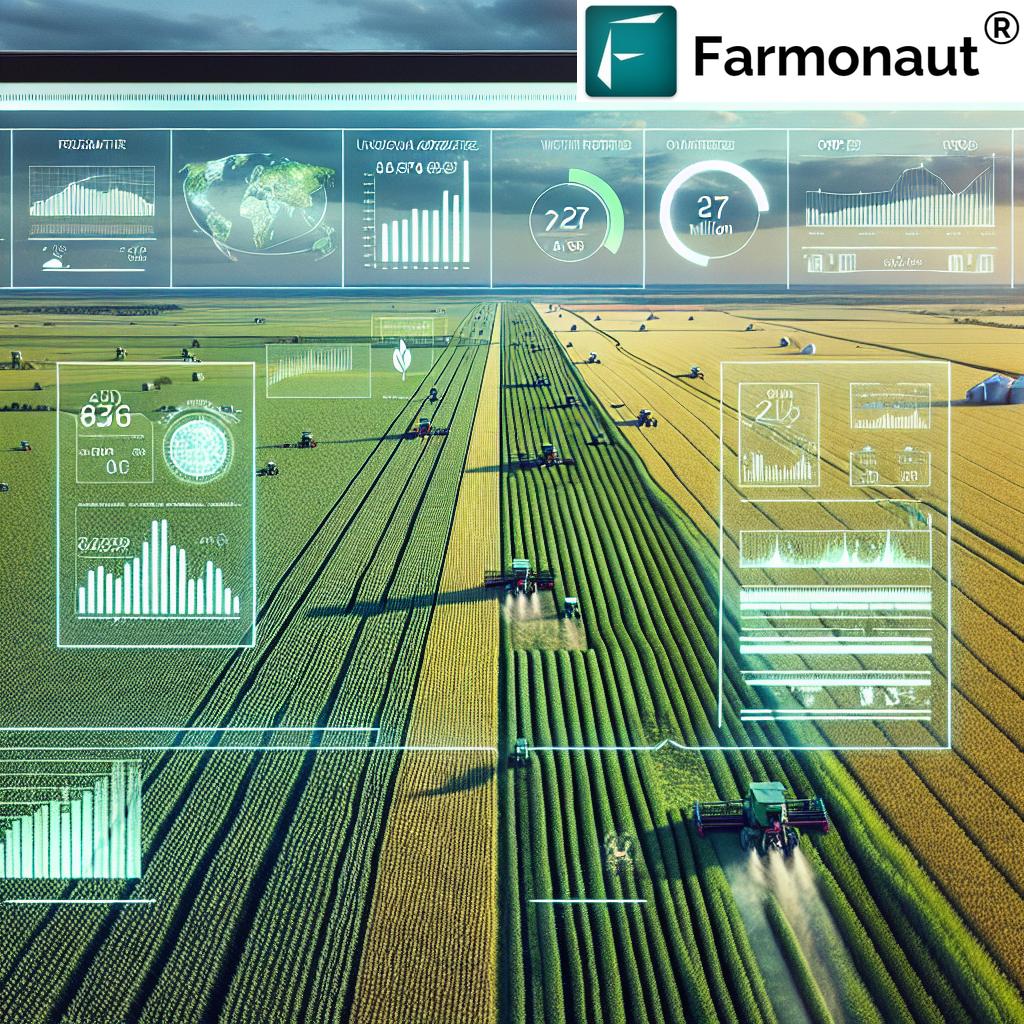Weed Farming Secrets: 7 Sustainable US Tips Exposed!
“Over 80% of US cannabis farms now implement at least one sustainable practice to reduce environmental impact.”
Introduction: The Evolution of Cannabis Cultivation in the United States
Cannabis cultivation—commonly called weed farming—has undergone a remarkable transformation in the United States. What was once a shadowy, clandestine activity hidden from public view is now recognized as a legitimate agricultural industry in many states and territories. Driven by shifting legal frameworks, surging medical and recreational use, and frontier advances in cultivation techniques, the cannabis industry is thriving. Alongside rapid industry growth comes heightened attention to sustainability, as cultivators, regulators, and communities seek to reduce cannabis’s environmental impact while ensuring economic viability and public health.
In this guide, we’ll explore the secrets behind sustainable weed farming in the US—covering legal trends, best cultivation practices, environmental considerations, and the latest technologies changing the landscape. Let’s unravel the 7 sustainable US tips that can help cannabis cultivators and communities thrive in 2025 and beyond!
Legal Landscape: Cannabis Cultivation in the United States (2025)
The legal status of cannabis in the United States is as complex as it is dynamic. As of May 2025, 39 states and four US territories permit medical cannabis legalization. Moreover, 24 states authorize recreational cannabis use. However, cannabis remains classified as a Schedule I substance under the federal Controlled Substances Act. This status positions cannabis as having a ‘high potential for abuse’ and ‘no accepted medical use’. But reforms are advancing: the US Drug Enforcement Administration (DEA) is reviewing cannabis to potentially reclassify it to Schedule III—recognizing medical applications and reducing the perceived abuse risk.
Let’s break down what federal and state cannabis regulations mean for cultivators:
- Federal Law: Cannabis is still illegal at the national level, and the Supreme Court’s Gonzales v. Raich (2005) ruling confirmed that even homegrown cannabis for medical use can be federally prosecuted.
- State Law: States like California, Colorado, Michigan, and Illinois allow legal cannabis industry operations for both recreational and medical use, but operators must comply closely with evolving state and local regulations.
Key Takeaway: Cultivators must navigate a tangled web of state and federal regulatory requirements, staying up to date as cannabis laws, compliance mandates, and court cases evolve.
- In Illinois, every cannabis cultivator is mandated to implement automatic watering and runoff reduction systems to conserve water and protect the environment.
- Municipalities in states like New Jersey can outright ban cannabis businesses, giving local communities significant control over the legal landscape.
Sustainable Cannabis Farming Practices: Our 7-Point Guide
Being part of the legal cannabis industry means taking responsibility for the environment and community. Our top tips focus on reducing environmental impact, staying compliant with cannabis regulations in the United States, and boosting long-term farm sustainability. Let’s dive into these 7 sustainable secrets for cannabis cultivators:
-
1. Embrace Water-Smart Cultivation Systems
Water usage is a sweeping concern in both indoor and outdoor cannabis growing. States such as Illinois and Michigan have implemented strict water regulations—including mandates for the use of automated watering systems, runoff restrictions, and wastewater recapture. Utilizing precision irrigation and moisture monitoring technologies helps us conserve water and maintain compliance.
Pro Tip: For advanced, satellite-based monitoring of soil moisture and irrigation efficiency, explore Farmonaut’s Large Scale Farm Management app. It delivers actionable insights to reduce water waste and keep operations environmentally sound. -
2. Choose Renewable Energy for Indoor Operations
While indoor cannabis cultivation enables precise environmental control, it is energy intensive—contributing to 1% of total US electricity consumption annually! (See trivia below.) Transitioning to renewable energy sources like solar or wind, switching to energy-efficient LED grow lights, and implementing advanced environmental control systems can greatly shrink a farm’s carbon footprint.
-
3. Prioritize Soil Health With Sustainable Growing Mediums
Sustainable soil management forms the backbone of successful cannabis cultivation. Methods like no-till farming, composting, cover cropping, and organic amendments (rather than synthetic fertilizers) improve soil fertility and biodiversity while reducing long-term environmental degradation.
What’s No-Till? It’s a farming method that leaves soil undisturbed, minimizing erosion and boosting organic matter for healthier cannabis crops. -
4. Deploy Integrated Pest Management (IPM)
Overuse of pesticides can lead to ecosystem imbalance, water contamination, and health risks. Many states implement strict guidelines for legal cannabis operations—requiring targeted, low-impact solutions. Integrated Pest Management (IPM) combines biological controls (beneficial insects), habitat management, and the careful use of approved, less harmful substances to manage pests with minimal negative impact.
-
5. Conserve and Reuse Resources
Resource management means monitoring, optimizing, and recycling inputs wherever possible—water, nutrients, and even plant waste! Using technology for real-time crop health monitoring (such as carbon footprinting tools by Farmonaut) allows us to track emissions, reuse wastewater, and reduce unnecessary consumption.
Explore Further: Learn how carbon footprinting solutions can benchmark and drive down your operation’s greenhouse gas emissions. -
6. Ensure Crop Traceability and Regulatory Compliance
Today’s legal cannabis industry demands transparent supply chains and strict compliance. Blockchain-based traceability tools (such as those offered via Farmonaut’s traceability) not only streamline recordkeeping and regulatory reporting but also build trust among consumers and regulators.
-
7. Engage with Social Equity Programs and Local Communities
The effects of the past “war on drugs” are still felt. Many cities—including Los Angeles—encourage social equity in cannabis industry by prioritizing licenses and support for those harmed by prior cannabis prohibitions. Building respectful relationships with communities and participating in social equity programs fosters inclusion, improves public perception, and helps create a truly sustainable industry.
“Legal cannabis cultivation in the US consumes an estimated 1% of the nation’s total electricity annually.”
Comparison Table: Sustainable Weed Farming Practices and Their Environmental Impact
| Farming Practice | Brief Description | Estimated Water Usage (L/kg yield) | Estimated Energy Consumption (kWh/kg yield) | Legal Compliance Level | Sustainability Score (1–5) | Estimated Yield Impact (%) |
|---|---|---|---|---|---|---|
| Organic Soil Growing | Soil-based, uses compost and natural amendments; avoids synthetic chemicals | 500-700 | 20–50 | Very High | 5 | +5% |
| Hydroponics | Soilless system, roots suspended in nutrient-rich water; closed loop | 200-350 | 120–250 | High | 4 | +10% |
| No-Till Farming | Avoids disturbing soil; increases organic matter & biodiversity | 450–700 | 20–50 | Very High | 5 | 0% to +8% |
| Integrated Pest Management (IPM) | Combines biological/chemical pest controls; reduces chemical use | Varies | Negligible | Very High | 4–5 | 0 to +3% |
| Renewable Energy Usage | Solar/wind/hydro for powering indoor operations | n/a | 10–50 (if 100% renewable) | High | 5 | 0% |
Key Cannabis Cultivation Techniques: Indoor vs Outdoor Growing
Let’s compare the main cannabis cultivation approaches in US weed farming, their pros, cons, and sustainable practices to optimize both yield and environmental stewardship.
Indoor vs Outdoor Cannabis Growing
- Indoor Growing: Allows year-round control over temperature, humidity, lighting, and airflow. This method is favored where outdoor conditions are adverse or when consistent quality is paramount. However, indoor operations require significant electricity consumption, primarily due to high-powered grow lights (HPS or LED) and climate control systems. It’s important to select full-spectrum LED lights to reduce energy use and heat output.
Sustainability note: We recommend investing in renewable energy sources (solar panels) and energy-efficient HVAC equipment to reduce environmental impact. -
Outdoor Growing: Uses natural sunlight and fresh air, making it eco-friendly and less energy demanding. Costs per pound are often lower, but cultivators must contend with unpredictable weather, pests, and security challenges.
Sustainability tip: Implementing drip irrigation and cover crops can significantly reduce water usage and erosion—and help maintain soil health.
Innovative Techniques: Stale Seed Bed for Weed Control
One of the latest advancements in sustainable farming is the stale seed bed method. This technique prepares the field for weed seed germination before main crop planting. Once the weeds emerge, they’re easily eliminated (physically or with shallow cultivation), drastically reducing the persistent weed seed bank and future competition for valuable crop resources.
- Benefits: Reduces pesticide reliance, improves crop health, and can increase organic matter in the soil.
- Limitations: Not suitable for all regions—success depends on climate and weed species.
Understanding Cannabis Environmental Impact
The US legal cannabis industry faces increasing scrutiny regarding its environmental impact. From indoor growing electricity consumption to outdoor operations affecting local water tables and ecological balance, every cultivator must consider:
- Energy Use: Indoor grows historically use high-intensity discharge lights, but energy-efficient LED solutions now offer the same yields with much lower electrical input and heat. Switching to automated climate control systems tuned to plant requirements can further decrease consumption.
- Water Consumption: Water scarcity and local watershed depletion are real threats. Mandatory runoff controls and the use of automated, precision irrigation can significantly reduce water usage per plant while protecting local ecosystems.
- Pesticide and Fertilizer Runoff: Overuse of pesticides and chemical fertilizers can pollute nearby water sources and disrupt biodiversity. Implementing environmentally conscious best practices—from organic amendments to IPM—can help meet regulatory standards and improve long-term farm health.
To track and minimize these environmental impacts, many progressive growers now use AI-based crop monitoring and carbon tracking platforms such as those available from Farmonaut’s Carbon Footprinting tool.
Economic Factors: Cannabis Market Prices Per Pound, Drivers, and Challenges
The rapid expansion of the legal cannabis industry has driven fierce competition—and significant economic fluctuation. Let’s explore the main drivers and hurdles for cultivators concerned with profit per pound:
- Falling Cannabis Prices Per Pound: In markets like California, the influx of legal supply has seen wholesale prices tumble—from over $2,000 per pound during the COVID-19 pandemic to about $1,200 per pound as excess supply meets stricter market oversight and rising compliance costs.
- Market Pressures: Small and medium cultivators are undercut by mass producers who can scale operations and absorb lower margins. Add threats from illicit market operations and it’s clear: efficiency, compliance, and sustainability are key to long-term survival.
- Environmental and Climate Risks: Catastrophic wildfires, droughts, and other climate events pose both production and insurance challenges. Modern risk management—supported by precision data and tools like the Farmonaut Crop Loan & Insurance verification system—helps cultivators safeguard their investment.
Navigating Cannabis Regulations and Compliance in the US
Staying within the law is crucial. The United States presents a complex patchwork of regulations for every cannabis farming operation:
- Zoning Laws: Each state—and often municipality—controls where cultivation is allowed, setting buffers from public places, schools, and even religious sites.
Tip: Always check the latest local ordinances before starting or expanding operations! - Security Protocols: Video surveillance, restricted access controls, and seed-to-sale inventory are mandated for legal cannabis facilities in most states.
- Pesticide and Water Compliance: Many states regulate both the substances allowed for pest control and the amount of water that can be diverted or used.
- Documentation and Reporting: Complete, transparent crop tracking is mandated for compliance with state and federal standards. Embracing digital traceability, like Farmonaut’s traceability solutions, eases compliance and audits.
API-Driven Farming: Future-Proof Your Data
Developers and agribusinesses seeking to integrate real-time satellite/field data with compliance tools can access Farmonaut’s robust API and Developer Docs.
Social Equity in Cannabis Industry and Community Impact
Social equity programs are crucial for repairing the injustices of the past. In Los Angeles, the social equity licensing period supports individuals from communities most harmed by historic cannabis enforcement. Cultivators should be aware of such programs—and municipalities’ right to regulate or ban cannabis businesses altogether (as in 71% of New Jersey municipalities).
- Benefits of Engagement: Social equity participation can expedite licensing, reduce fees, and improve public perception.
- Community Involvement: Transparent engagement with neighbors and policymakers fosters goodwill, reduces the risk of business restrictions, and can uncover mutually beneficial sustainability projects.
Through conscious implementation of sustainable practices and active participation in equity programs, we can help foster trust within our communities—and build a thriving, inclusive marketplace.
Future Outlook: Tools and Technologies Empowering Sustainable Weed Farming
The momentum behind legalization and sustainable cannabis cultivation shows no sign of slowing. With the possibility of federal reclassification, increasing social acceptance, and rapid innovation, here’s what lies ahead:
- Advanced Farm Management: Farmonaut’s large-scale management tools allow operators to monitor crop health, soil moisture, and resource use anywhere in the world via satellite, boosting sustainability and reducing operational costs.
- AI Advisory: Automated weather forecasts, satellite-based alerts, and real-time crop insights. These digital advisors supercharge our decision-making and risk mitigation strategies.
- Blockchain Traceability: Every harvest, batch, and supply chain movement is recorded and verifiable—crucial for regulatory compliance and building end-user trust.
- Mobile Responsiveness: Modern management applications are mobile-optimized, ensuring that cultivators can access critical data and make decisions on-the-go—whether in the field or the boardroom.
In short, tomorrow’s sustainable weed farm blends scientific rigour, technological innovation, and community engagement for genuine, long-term viability.
FAQ: Sustainable Weed Farming in the US
What is the most environmentally sustainable method for cannabis cultivation?
Outdoor organic soil farming, no-till cultivation, and the integration of renewable energy for any necessary infrastructure generally provide the lowest environmental footprint and highest sustainability scores. Water conservation and advanced pest management are also critical components.
How can cannabis cultivators legally monitor and reduce their environmental impact?
Leveraging technologies like satellite monitoring and AI-driven crop advisory systems allows cultivators to track soil, water, and energy usage in real time—facilitating legal compliance and targeted, sustainable interventions.
What are the biggest economic challenges facing small weed farmers in the United States?
Small and medium-scale cultivators face downward price pressure due to oversupply, rising compliance costs, competition from illicit operations, and increasing climate-related risks.
Are there any government incentives for sustainable cannabis farming?
Some states and municipalities offer tax breaks or fast-track programs for cultivators who prioritize sustainable agricultural practices, water conservation, or social equity in their operations. It’s critical to check local policy updates regularly.
How does cannabis legalization impact the environment?
While legalization increases transparency and oversight, legal industry growth can intensify resource demand—especially for energy and water. The industry’s shift toward sustainable practices mitigates these negative impacts while supporting community health and environmental resilience.
Start Your Sustainable Farming Journey
Ready to leverage the power of satellite intelligence, AI, and blockchain to revolutionize your cannabis cultivation? Explore Farmonaut’s affordable subscription plans, designed to fit farms of any scale—accessible via web, Android, or iOS.
Conclusion: The Future of Sustainable Cannabis Cultivation in the United States
Cannabis cultivation in the US has emerged from the shadows to become a legitimate, highly regulated, and rapidly growing agricultural industry. As regulatory landscapes mature and legal frameworks continue to advance, a balanced commitment to sustainability, environmental responsibility, and community engagement will define industry leaders.
By adopting water-smart systems, prioritizing renewable energy, nurturing soil health, practicing IPM, and ensuring traceable compliance, cultivators not only reduce their environmental footprint but also gain a competitive edge in the evolving market. Technologies like Farmonaut’s satellite-based solutions now make it possible to monitor, measure, and manage sustainability goals at any operational scale.
Let us move boldly toward a greener, more just, and viable future for cannabis farming in the United States. Time to put these 7 weed farming secrets into action!
Questions about sustainable weed farming or want to learn more about Farmonaut’s satellite-powered solutions? Visit our website today for resources, product info, and expert support.

















